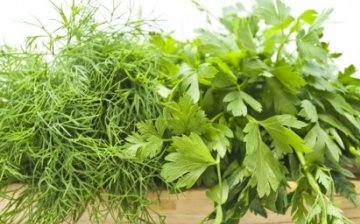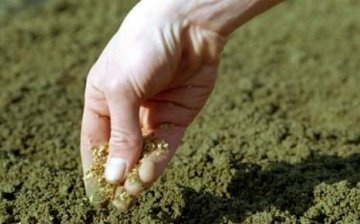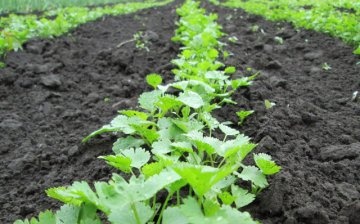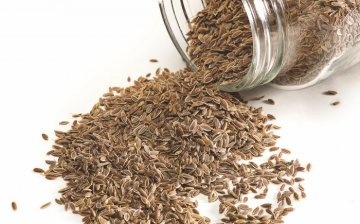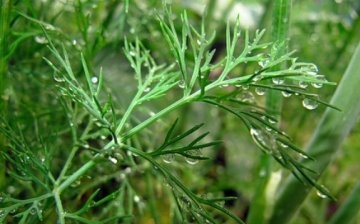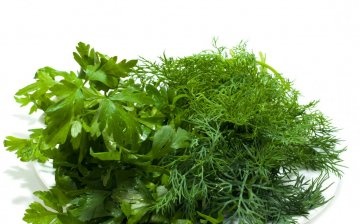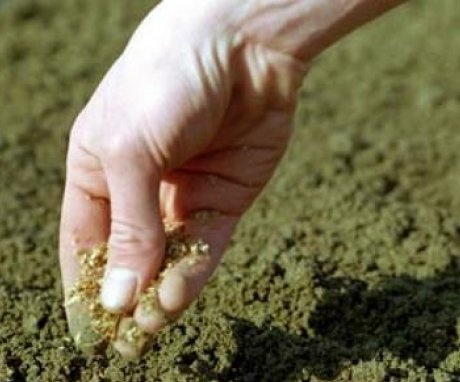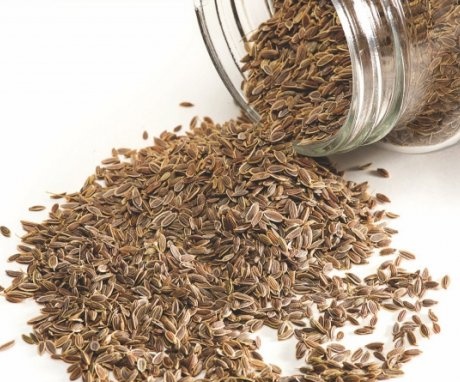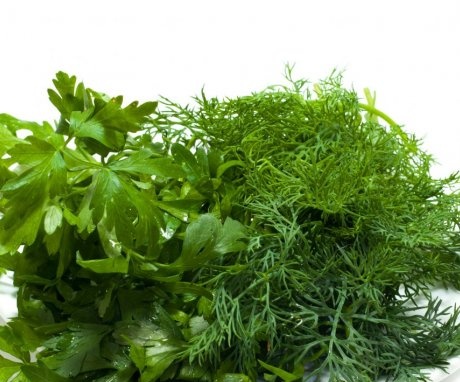We plant dill and parsley: seed preparation, care and planting features
In the summer, not a single table can do without greenery. To provide the family with greenery throughout the summer, it is necessary to properly plant parsley and dill. Even an inexperienced gardener can do this.
Content:
- Features of planting parsley
- Taking care of parsley after planting
- Features of the preparation of dill seeds and soil for their planting
- Features of planting dill
- General recommendations for planting dill and parsley
Features of planting parsley
Planting parsley is carried out in several stages. The main ones include:
- Soil preparation
- Seed preparation
- Disembarkation
This plant loves places that are characterized by good ventilation and has fertile soil. Parsley grows poorly and develops in those areas where cumin, dill, carrots, cilantro... The preparation of the site for planting this plant should be carried out in the autumn. For this, it is necessary not only to dig up the soil, but also to add fertilizers to it. For this purpose, humus can be used. For one square meter of the site, it is necessary to add 5 kilograms of humus.
The introduction of complex mineral fertilizers is carried out in the spring before planting parsley.
Tips for growing parsley:
- Planting parsley must be done in rows.
- It is best to have a distance of 20 centimeters between the rows.
- Depending on the variety of this plant and the characteristics of its cultivation, you can change the planting scheme.
- At the initial stage of warming up the soil, in the second half of April, you can plant parsley.
- It is necessary to sow no more than 0.5 grams of seeds per square meter of the plot. In this case, the depth of the grooves should be no more than one centimeter.
- To preserve the required amount of moisture, the area is covered with a film.
The similarity of dry parsley seeds is rather poor. That is why they need to be wetted in warm water before planting. Then they are dried to a state of flowability. Parsley seeds are able to grow with ease even at a temperature of +2 degrees. Seed germination of this plant directly depends on the characteristics of planting and the seeds themselves. You can cut parsley within a few weeks after planting.
Taking care of parsley after planting
In order for parsley to fully grow and develop, it is necessary to provide it with full-fledged care. Cut the parsley as it ripens. With proper care and timely planting of this plant, you can cut it throughout the season.
First of all, it is necessary to feed the plant several times during the warm season:
- Saltpeter can be used as a top dressing. This fertilizer must be applied in an amount of 50 grams per 10 square meters.
- Also for this purpose, you can use phosphorus-potassium fertilizers.
- Saltpeter is best used as a top dressing when growing parsley.
- When growing root parsley, it is best to use phosphorus-potassium fertilizers, which are applied during the growing season.
Watering parsley correctly is quite an important aspect when growing it. Watering is carried out in strict accordance with weather conditions. In this case, it is necessary to ensure that the parsley does not stick too much.
Water the parsley in the morning or evening.
Watering parsley in the middle of the day will adversely affect its color and turn yellow. Also, when growing this plant, it is necessary to actively fight weeds. Parsley does not like such a neighborhood, since the weeds not only shade it, but also draw out all the nutrients from the soil. Also, weeds can be carriers of some diseases that negatively affect the yield of a given plant.
Features of the preparation of dill seeds and soil for their planting
In order to achieve the highest possible yield, it is necessary to properly plant the dill. First of all, the correct selection of the dill planting site is made. This plant is very fond of sunlight and long daylight hours, therefore, for planting it, you must choose a place that meets these requirements. Dill is characterized by resistance to cold and frost, which allows it to be planted as early as possible. For planting dill, it is necessary to choose rich soils, since it grows very poorly on poor soils.
To ensure friendly and timely seed emergence, it is necessary to properly process before sowing.
Dill seeds that have wintered in the ground sprout much faster and more amicably in the spring. This is due to the fact that the seeds contain a large amount of essential oils, which greatly complicates their germination. That is why, before planting dill, it is necessary to prepare them appropriately.
In order to prepare the seeds for planting, they are folded into a gauze bag and soaked in water for three days. The water that has settled is drained. This action is performed quite often - about 5 times a day. Carrying out this action will ensure the disinfection of seeds and accelerate the emergence of seedlings.
After the seeds are processed, they must be:
- Put on gauze bags. They are covered with steamed sawdust or pieces of damp cloth.
- In this position, the seeds are left for four days. In this case, the temperature should be at least 20 degrees.
- It is necessary to withstand the seeds of this plant until some of them sprout.
- Before planting seeds, they must be slightly dried, and then planted in soil well spilled with hot water.
To increase the speed and increase its level, you can carry out aeration of the seeds. Enough effective in this case is the bubbling of seeds in water that is saturated with oxygen. This action is performed during the day. At home, you can use a compressor from an aquarium for this purpose.
If you need to get an early harvest of the plant, you can grow seedlings on the windowsill.
It is transplanted into open ground after 35 days. This method is much more troublesome, but at the same time it allows not only to save seeds, but also to grow high-quality and dense greens.
Features of planting dill
This plant can easily tolerate frosts down to -4 degrees. That is why you can sow seeds immediately after the snow has melted from the garden and frost from the ground. Dill seeds are capable of germinating at temperatures of +3 degrees. The optimal conditions for growing this plant is the temperature range from +15 to +20 degrees. To ensure consistent green production throughout the season, you need to sow the seeds every two weeks. An early harvest of this plant can be obtained already in the first decade of April.
Dill loves neutral and loose soils. When choosing a heavy soil, the similarity, growth and development of this plant will be much worse than in loose soil.
To facilitate planting seeds in the spring, it is best to prepare the garden bed in the fall. To do this, you need to dig up the ground to a depth of at least 20 centimeters. At the same time, mineral fertilizers and humus are introduced into the soil. In the spring, it will be necessary to carefully level the surface of the garden bed and make grooves on it, the depth of which is at least 2 centimeters.
Dill growing tips:
- Dill is best planted in rows.
- The distance between them is 20 centimeters.
- After stretching the grooves and moistening the greenery, the seeds are planted in the ground.
- Sprinkle the seeds on top with loose earth. In this case, the soil must be slightly moistened.
- It is not necessary to water the crops, as this will lead to the fact that the seeds go far into the soil.
In order to get dill greens as early as possible, it is necessary to plant seeds before winter. For this purpose, the preparation of the beds is carried out in the fall. At the same time, they are filled with organic fertilizers. Dill planting in this case should be done before the ground freezes. At the same time, the rate of planting seeds should increase by 25 percent, and the depth of planting seeds should be at least 3.5 centimeters.
In order to protect the bed from the formation of a crust, it needs to be covered with mulch... With its help, seedlings will not appear during the first thaw. Compaction of the soil with such a planting does not need to be done.
Dill seeds can also be planted in winter. This requires:
- Prepare the soil in autumn.
- In winter, the bed must be freed from snow and seeds must be scattered over its surface.
- The crops must be covered with a layer of earth, which mixed with humus, or one humus.
- After the snow begins to melt, the seeds will be sucked in with the help of the melt water and will begin to germinate. This will allow you to get an early and full harvest.
The winter and sub-winter methods of planting this plant allow you to cut the seeds a few weeks earlier.
General recommendations for planting dill and parsley
In order to ensure a constant harvest of dill and parsley, it is necessary to plant them in stages, that is, to plant them in parts with an interval of 1-2 weeks. After seed germination in two weeks, it is necessary to thin out these plants. In this case, the distance between individual plants should be from 7 to 15 centimeters when planting a root variety and 20 centimeters when planting a leafy variety. This will ensure the formation of a healthy and full-fledged bush.
Watering greens should be done regularly.
In order to protect the plant from yellowing in the summer, it is necessary to plant seeds. This is because the sprouts will be protected from the daily sun of the day. If you need to get an early harvest, you can plant seeds from greenery.
Unlike dill, parsley is a biennial plant. With proper planting and care of this crop, you can also get a good harvest for the next year. It is necessary to grow dill and parsley seedlings in an unshaded place. This will allow you to get fresh herbs in large quantities already at the beginning of May.
You can grow dill and parsley not only in the open field, but also on the windowsill:
- The first harvest of these plants when grown in this way will appear in a month.
- When planting plants on the windowsill, you can significantly save the number of seeds and get a larger amount of spice.
- These plants are very fond of moist soil and the sunny side, which provides them with full growth and development.
Dill and parsley grow very poorly on unfertilized soil, so you should not make such mistakes when growing these crops. When planting greenery, you need to pay attention to their varieties.Each variety of these plants may have its own growing characteristics, which must be taken into account without fail. Otherwise, you can reduce the level of productivity of these plants.
When growing parsley and dill, it must be remembered that the lighting level is the decisive factor for them.
The lower it is, the longer the growth of greens will last and, accordingly, the later is harvested. Planting seeds should be done in early spring, when the daylight hours are long enough. It is necessary to adhere to this rule not only when planting plants in open ground, but also when growing them indoors. For parsley greens in winter, its bushes can be dug up in the fall and transplanted into indoor pots.
Growing dill and parsley is a fairly simple procedure. To do this, you just need to adhere to the rules and know everything about the features of the performance of this action. Even an inexperienced gardener can grow crops.
More information can be found in the video.



